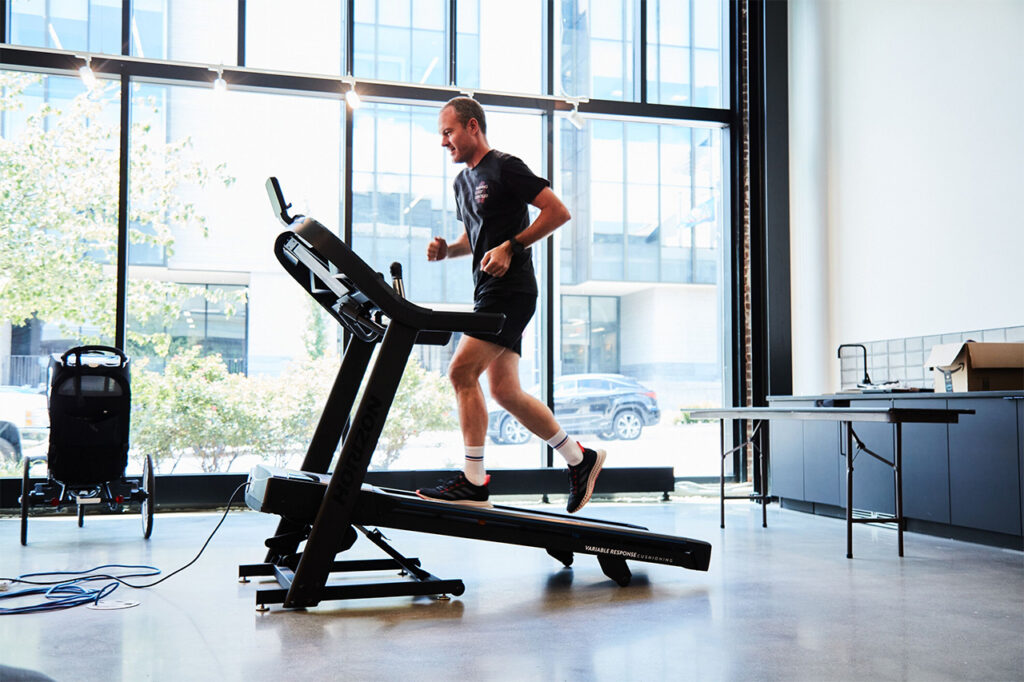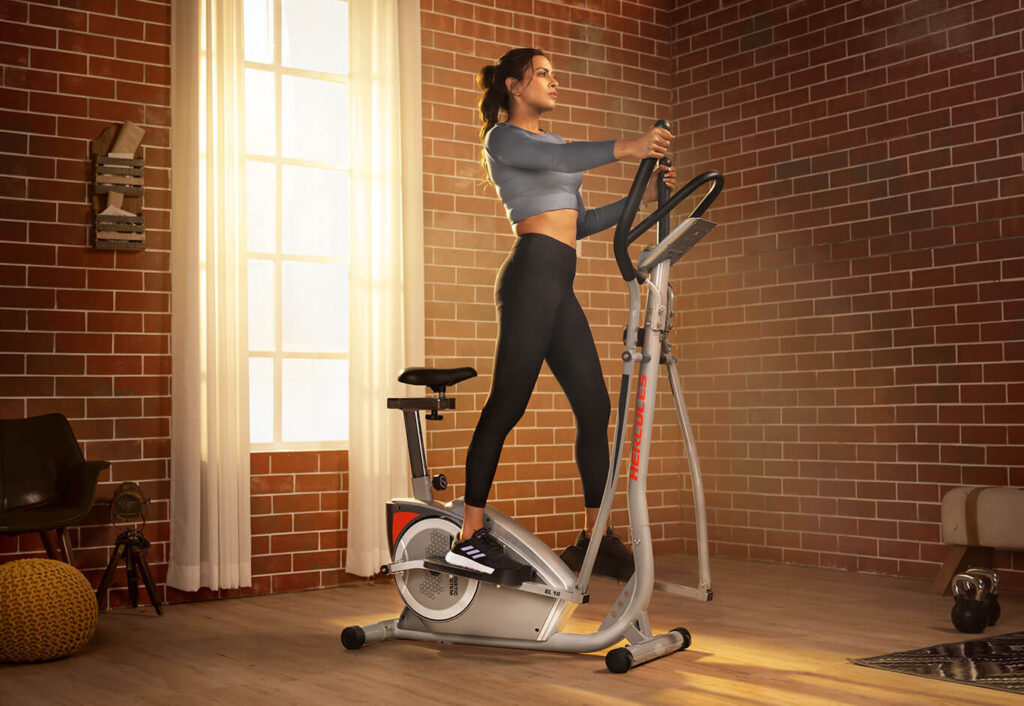When it comes to cardiovascular exercises, the treadmill and elliptical are two of the most popular machines in gyms and homes worldwide. Both offer excellent ways to improve heart health, burn calories, and increase overall fitness, but they do so in different ways. This comprehensive guide will break down the differences of treadmill vs elliptical, comparing their benefits, drawbacks, and how they can fit into various fitness goals. Without further chitchat, let’s jump into this to compare treadmill vs elliptical.
Treadmill: Overview
A treadmill is a versatile piece of equipment that simulates walking, jogging, and running on a flat or inclined surface. It features a moving belt that allows the user to walk or run in place while adjusting the speed and incline.

Key Features
- Adjustable speed and incline: Users can control the intensity of their workouts by changing the speed (measured in miles or kilometers per hour) and incline (up to a certain percentage).
- Variable intensity: It can cater to people of all fitness levels, from walking for beginners to sprinting for advanced athletes.
- Natural movement: Running or walking on a treadmill mimics natural movements, making it ideal for those who prefer to train for real-world activities such as road running or hiking.
Benefits of Using a Treadmill
- Weight loss: Treadmills are highly effective for burning calories. Running burns approximately 600-900 calories per hour, depending on the intensity and individual weight.
- Cardiovascular health: Regular treadmill use improves heart health, lowers blood pressure, and increases stamina.
- Bone density: Because running and walking are weight-bearing exercises, they help strengthen bones and reduce the risk of osteoporosis.
- Customization: Treadmills allow users to vary their workouts by changing speed and incline, simulating various terrains like hills or flat roads.
- Progress tracking: Most treadmills come equipped with tracking features, such as calories burned, distance covered, and heart rate monitoring, which allows users to monitor their progress over time.
Drawbacks of Using a Treadmill
- Impact on joints: Running on a treadmill, especially at high speeds or inclines, can place stress on the joints, particularly the knees, hips, and ankles. For individuals with joint pain or arthritis, this can be a concern.
- Repetitive motion: Treadmill running or walking uses the same muscles repetitively, which may lead to overuse injuries like shin splints or plantar fasciitis.
- Less muscle engagement: While running on a treadmill engages the lower body muscles, the upper body does not receive much of a workout unless you actively engage your arms.
Elliptical: Overview
The elliptical machine offers a low-impact cardio workout that mimics walking, running, or climbing stairs without placing significant stress on the joints. It features two pedals for the feet and handles for the hands, allowing for simultaneous upper and lower body movement.

Key Features
- Low-impact design: The elliptical provides a smooth, gliding motion that reduces impact on the joints, making it suitable for individuals with joint pain or those recovering from injuries.
- Full-body workout: The elliptical engages both the upper body (through the handles) and the lower body, providing a full-body cardio workout.
- Adjustable resistance: Elliptical allows users to increase or decrease resistance levels, which affects how hard they need to push or pull the pedals and handles.
Benefits of Using an Elliptical
- Low-impact on joints: The elliptical’s smooth motion eliminates the jarring impact that comes with running or walking on a treadmill. This makes it ideal for people with arthritis, joint pain, or recovering from injuries.
- Full-body workout: Ellipticals engage both the lower and upper body muscles, including the legs, glutes, arms, and chest. This can lead to greater overall muscle engagement compared to treadmills.
- Calorie burning: Although calorie burn on an elliptical is slightly lower than running on a treadmill, users can still burn 400-800 calories per hour, depending on the intensity of the workout.
- Versatility: Users can pedal forward or backward on an elliptical, which helps target different muscle groups, particularly in the legs and glutes.
- Reduced risk of injury: Due to the low-impact nature of the elliptical, the risk of injuries like shin splints, knee pain, or stress fractures is significantly lower than on a treadmill.
Drawbacks of Using an Elliptical
- Less natural movement: The elliptical does not mimic natural walking or running movements as closely as the treadmill does. Some users may find the motion awkward or unnatural, especially if they are accustomed to running outdoors.
- Less intensity for advanced athletes: While the elliptical provides a good cardio workout, it may not be intense enough for serious runners or athletes looking to improve their running performance.
- Limited variety: Although users can adjust the resistance and pedal direction, the elliptical lacks the variety in intensity and workout styles that a treadmill offers. There’s no option for sprinting or hill training.
Treadmill vs Elliptical: Key Comparisons
Now that we’ve outlined the basic features, benefits, and drawbacks of each machine, let’s dive into a direct comparison of treadmill vs elliptical based on different factors.
Impact on Joints
- Treadmill: Higher impact, especially when running or jogging, which can strain the knees, ankles, and hips over time.
- Elliptical: Much lower impact due to its smooth, gliding motion, making it ideal for those with joint issues or in need of a gentler workout.
Winner: Elliptical (for joint health).
Calorie Burn
- Treadmill: Running on a treadmill burns more calories than using an elliptical, with the potential to burn 600-900 calories per hour depending on the speed, incline, and individual effort.
- Elliptical: Elliptical machines still burn a significant amount of calories but typically a bit less than running, averaging between 400-800 calories per hour depending on resistance and effort.
Winner: Treadmill (for higher calorie burn).
Muscle Engagement
- Treadmill: Primarily targets the lower body (quads, hamstrings, calves, and glutes) with little to no engagement of the upper body unless hand weights or running with arms are used.
- Elliptical: Engages both the upper and lower body, including the arms, shoulders, and chest, thanks to the moving handles.
Winner: Elliptical (for full-body engagement).
Versatility and Workout Variety
- Treadmill: Offers the ability to walk, jog, run, and simulate uphill climbs with varying speeds and inclines. This makes it excellent for interval training, long-distance running, or casual walking.
- Elliptical: Primarily provides a cardio workout with adjustable resistance levels. While it allows for forward and backward pedaling to engage different muscle groups, it doesn’t offer as many variations as the treadmill.
Winner: Treadmill (for workout variety).
Risk of Injury
- Treadmill: Higher risk of injury due to the repetitive impact on joints and potential falls if speed or incline is mismanaged.
- Elliptical: Lower risk of injury due to the smooth motion and lack of impact, making it ideal for injury prevention or rehabilitation.
Winner: Elliptical (for injury prevention).
Cardiovascular Benefits
- Treadmill: Running, especially at higher speeds or inclines, provides a more intense cardiovascular workout, which is beneficial for improving cardiovascular endurance.
- Elliptical: Provides excellent cardiovascular benefits but may not match the intensity of a treadmill workout for more advanced users.
Winner: Treadmill (for higher-intensity cardio).
Cost and Accessibility
- Treadmill: Treadmills tend to be more expensive than ellipticals, especially when considering high-end models with advanced features like shock absorption, incline adjustments, and workout programs.
- Elliptical: Elliptical machines are often more affordable and can vary widely in price based on features. They also tend to have fewer mechanical issues over time compared to treadmills.
Winner: Elliptical (for cost-effectiveness).
Which Machine is Better for Your Fitness Goals?
For Weight Loss
Both machines can contribute to weight loss, but the treadmill edges out the elliptical for calorie burning, particularly at higher intensities. If your goal is to shed pounds quickly, especially through running or high-intensity interval training (HIIT), the treadmill may be more effective.
Recommendation: Treadmill (slight advantage).
For Building Cardiovascular Endurance
Running on a treadmill, especially with varying speeds and inclines, can significantly boost cardiovascular endurance. However, if you’re looking for a gentler option that’s easier on the joints, the elliptical can still provide solid cardio benefits.
Recommendation: Treadmill (for higher-intensity endurance), Elliptical (for low-impact endurance).
For Muscle Tone and Strength
The elliptical provides more upper body involvement, helping tone arms, shoulders, and chest in addition to the lower body. If full-body conditioning is your goal, the elliptical is a better choice.
Recommendation: Elliptical (for full-body toning).
For People with Joint Pain or Injuries
Due to its low-impact design, the elliptical is far more suitable for those with joint issues or recovering from injuries. The treadmill’s high-impact nature can exacerbate joint pain and increase the risk of injury.
Recommendation: Elliptical (perfect for people with joint issues).
Concluding Lines
You can now realise after reading the in-depth comparison of treadmill vs elliptical that both the equipment are fine for building cardiovascular strength and weight loss but both have their different pros and cons. That is why, you should choose the one that is more beneficial and convenient for you. Hopefully, you have already found the suitable one for your daily cardio. If you found this article on treadmill vs elliptical helpful enough, let us know in the comments. Thanks for visiting and appreciating our work.
